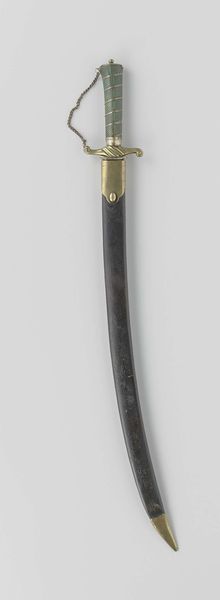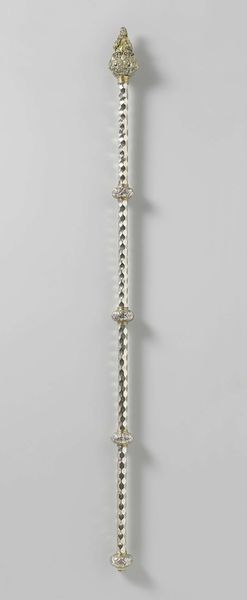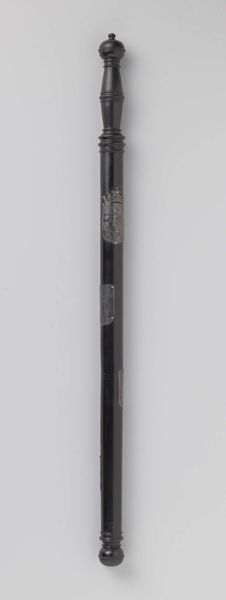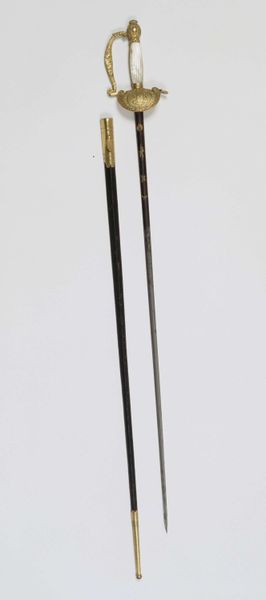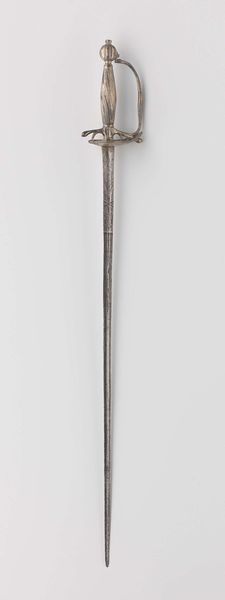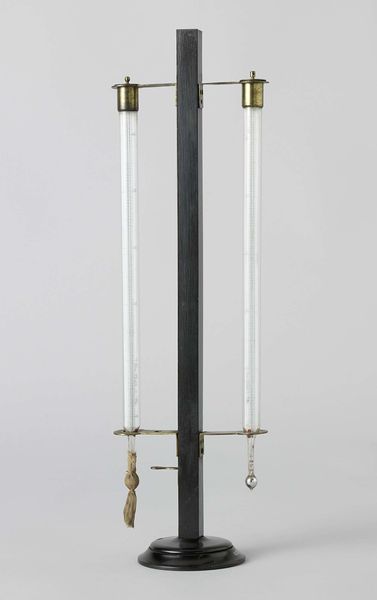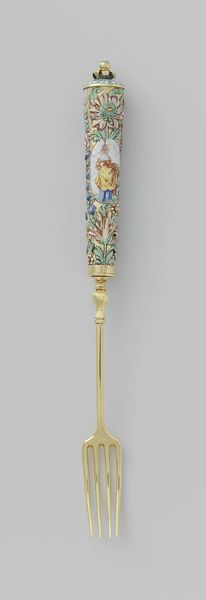
silver, metal, sculpture
#
medieval
#
silver
#
metal
#
sculpture
Dimensions: length 26.9 cm, width 1.0 cm, thickness 0.8 cm
Copyright: Rijks Museum: Open Domain
Curator: Here at the Rijksmuseum, we have a fascinating example of sixteenth-century dining: a set of knives and a fork that once belonged to Emperor Charles V, dating from 1532. They're crafted from silver and other metals. My first impression is, despite its simple functionality, it projects authority. Editor: Authority? Well, sure, I guess if you picture Charles V brandishing a fork! But I’m mostly struck by how delicate the detailing seems. It’s ornate, even. I mean, for something intended to stab meat. It seems precious and kind of… fussy. Curator: Ah, but that fussiness speaks volumes. Notice the proportions. The ratio of the handle to the length, for example, and the carefully inlaid decoration. It projects a sense of refinement, even power. This isn’t mere utility. It’s a symbol. The material alone, the use of silver, separates Charles V from commoners. Editor: Symbolism, okay, I get it. Shiny things say "royalty." But it’s also whispering another story—of a shift away from everyone just tearing into a roast with their hands! Silver might denote the Emperor’s status, but a fork signals this whole move towards etiquette. Can you imagine the debates at dinner? "Charles, put down the chicken bone, darling, use the fork!" Curator: A valid point! It represents emerging societal changes, a transition to elaborate table manners which gained more currency during the Renaissance. Considering also its metallic constitution, what meaning do you see within this material choice? Editor: Material choice. I love that it seems so fragile but so dangerous. It is made to hurt. So you have refinement right up next to raw violence! That tells you a little about who Emperors really are. Curator: Precisely! Such contradictions in function and material serve to both reflect the personal history of the piece and also, the broader context of power that shaped early modern Europe. Editor: Okay, I confess. Suddenly I have a lot more respect for the fussy fork! You have convinced me it has much to communicate about power, material and control. Curator: And it speaks even louder to the historical value we afford these instruments of authority. An interesting consideration for our visitors, I hope.
Comments
rijksmuseum about 2 years ago
⋮
Charles V acquired this portable cutlery set in Italy. The two large knives bear his arms and the chain of the Order of the Golden Fleece. Above this is the emperor’s crown and below it the Burgundian cross of Saint Andrew with the mythical pillars of Hercules (signifying the end of the world). They are all symbols of the emperor’s power.
Join the conversation
Join millions of artists and users on Artera today and experience the ultimate creative platform.
